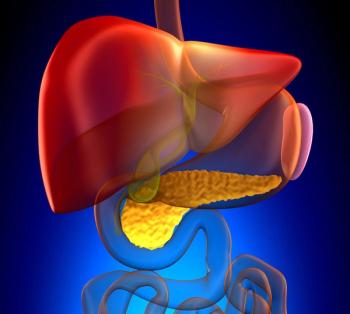
Cyclophosphamide Combo Yields Significant GVHD-Free Survival in Blood Cancers
An experimental cyclophosphamide-based prophylaxis regimen may also elicit a lower rate of chronic graft-versus-host-disease vs standard prophylaxis in patients with hematologic cancers.
Experimental prophylaxis with cyclophosphamide plus tacrolimus and mycophenolate mofetil improved graft-versus-host-disease (GVHD)-free, relapse-free survival (RFS) vs tacrolimus plus methotrexate among patients undergoing allogeneic hematopoietic stem cell transplantation (HSCT) for hematologic cancers, according to findings from a phase 2 study published in New England Journal of Medicine.
According to a multivariate Cox regression model, patients receiving the cyclophosphamide-based regimen were less likely to experience grade 3 or 4 acute GVHD, disease progression, or death compared with those receiving the standard prophylaxis combination (HR, 0.64; 95% CI, 0.49-0.83; P = .001). Additionally, the adjusted 1-year GVHD-free, RFS rate was 52.7% (95% CI, 45.8%-59.2%) vs 34.9% (95% CI, 28.6%-41.3%) in each respective treatment group.
A post hoc analysis not prespecified in the study protocol indicated that patients who were 65 years or older and those who were younger than 65 experienced similar outcomes, as did patients who received related donor grafts compared with those who received unrelated donor grafts.
“The current trial provides strong evidence of the superiority of cyclophosphamide [plus tacrolimus and mycophenolate mofetil] over the most commonly used GVHD prophylaxis regimen for HLA-matched transplantation in the United States,” the study authors wrote. “Cyclophosphamide [plus tacrolimus and mycophenolate mofetil] has also been used after myeloablative conditioning, but comparisons of this regimen with tacrolimus [plus] methotrexate are lacking.”
In this randomized, multi-center phase 2 trial, patients were randomly assigned to receive an experimental or standard prophylaxis regimen following reduced-intensity or nonmyeloablative peripheral-blood allogenic HSCT. The experimental regimen consisted of 50 mg/kg of cyclophosphamide on days 3 and 4 after HSCT, tacrolimus at a dose of 0.02 to 0.03 mg/kg per day intravenously or 0.05 to 0.06 mg/kg per day orally starting on day 5, and 15 mg/kg of mycophenolate mofetil intravenously or orally on days 5 to 35. Standard treatment included methotrexate at 15 mg/m2 on day 1 and 10 mg/m2 on days 3, 6, and 11 plus tacrolimus starting 3 days before HSCT.
The primary end point was 1-year GVHD-free RFS, with events defined as instances of grade 3 or 4 acute GVHD, chronic GVHD requiring systemic immune suppression, disease progression, or death from any cause. Secondary end points included cumulative incidence of grades 2 to 4 GVHD and grades 3 or 4 acute GVHD, chronic GVHD, systemic immunosuppression-free survival, hematologic recovery, and engraftment.
Patients 18 years and older undergoing HSCT for hematologic cancers including acute leukemia or chronic myeloid leukemia, chronic lymphocytic leukemia or small lymphocytic leukemia, or lymphomas sensitive to therapy were eligible for enrollment on the study.
Investigators enrolled 431 patients across 37 treatment centers in the United States, which included 214 in the experimental prophylaxis group and 217 in the standard prophylaxis group. The median follow-up was 12 months (range, 0.2-12.0) after treatment randomization for surviving patients. Overall, baseline characteristics were comparable between the 2 treatment groups.
In the overall population, most patients were male (60.3%), not Hispanic or Latinx (91.4%), and White (87.9%). Additionally, most patients had acute myeloid leukemia (48.0%) and had 8/8 matched unrelated donors (66.8%).
Overall, 6.3% (95% CI, 3.5%-10.2%) of patients in the experimental group and 14.7% (95% CI, 10.3%-19.8%) of those in the standard group were estimated to have grade 3 or 4 acute GVHD. Additionally, 21.9% (95% CI, 16.4%-27.9%) and 35.1% (95% CI, 28.7%-41.6%) of patients in each group had chronic GVHD 12 months following transplantation.
In terms of maximum severity among those with chronic GVHD in the experimental group, 29 patients had mild, 11 had moderate, and 3 had severe disease. In the standard group, the maximum severity was mild in 36, moderate in 24, and severe in 11.
The 1-year immunosuppression-free survival rate was 50.0% (95% CI, 42.8%-57.2%) in the experimental group vs 39.7% (95% CI, 32.9%-46.8%) in the standard treatment group. The median time to neutrophil recovery was 16 days in both cohorts, and the 28-day cumulative incidence of neutrophil recovery was 90.3% (95% CI, 85.3%-93.6%) vs 93.4% (95% CI, 89.0%-96.1%) in each group.
Infections occurred in 52.4% of patients in the experimental group compared with 47.2% of patients in the standard group. The estimated 1-year grade 2 or 3 infection rates were 40.0% (95% CI, 33.2%-46.7%) vs 30.4% (95% CI, 24.3%-36.7%) in each respective group.
At 1 year, the cumulative incidence of relapse or progression was 20.8% (95% CI, 15.5%-26.7%) and 20.2% (95% CI, 15.0%-25.9%) in the experimental and standard groups, respectively (HR, 0.98; 95% CI, 0.64-1.52). One patient receiving experimental treatment had Epstein-Barr virus–positive lymphoproliferative disorder at 308 days following transplantation.
Reference
Bolaños-Meade J, Hamadani M, Wu J, et al. BMT CTN 1703 Investigators. Post-transplantation cyclophosphamide-based graft-versus-host-disease prophylaxis. N Engl J Med. 2023;388:2338-2348. doi:10.1056/NEJMoa2215943
Newsletter
Stay up to date on recent advances in the multidisciplinary approach to cancer.















































































